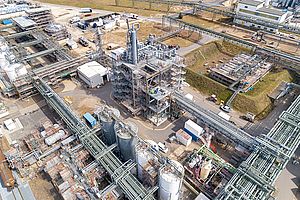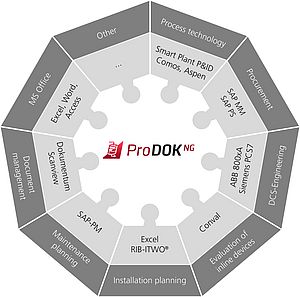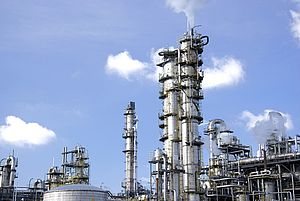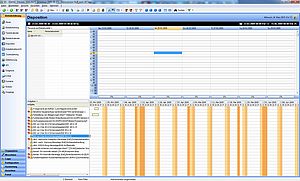Planned downtimes are nothing unusual in process automation. While production is at a standstill, activities in the rest of the factory are proceeding at high speed: necessary adaptations are being carried out to optimize the plant and keep it state-of-the-art. Thus BASF used the planned downtime in Schwarzheide in 2018 for large-scale revisions of several plant components; this included alterations to the instrumentation and control of the toluene diisocyanate plant.
Toluene diisocyanate (TDI) is an important basis for the production of the special plastic polyurethane. It is used especially in the furniture industry in elastic foams for mattresses, upholstery and wood coatings, and in the automotive sector for car seats. At present BASF produces TDI at its plants in Schwarzheide and Ludwigshafen in Germany, as well as internationally in Yeosu/South Korea, Caojing/China and Geismar/USA. The TDI production plant in Schwarzheide now required optimization. Display and operating components were already state-of-the-art. However, process-related components in the E/A periphery needed to be replaced by modern signal adjustment modules and some thousands of E/A cards.
Good planning: The main determinant for sucessful refitting
The TDI plant consists of the production plant itself and a chlorine storage facility. Work needed to be done on both parts of the plant. The downtime was planned from the end of June to mid-July, meaning that three weeks were available for the refitting. During this time it was not only planned to replace the components already mentioned, but also to optimize and modernize all the existing wiring. Thus, a competent service provider was needed who could draw up the complete electronic planning documentation in the shortest possible time and in the highest possible quality, as required by BASF. Close and flexible cooperation with the BASF project coordinator was needed in order to find ideal solutions together. Since the project was extremely complex and the time schedule very tight, the chemical company brought in two external service providers to make sure of achieving success within the short time window. The project was split into refitting the production plant – which constituted approximately 80 percent of the work to be done – and refitting the chlorine storage facility. The automation experts from Rösberg won the tender for the production plant. They also ensured that despite the involvement of several different participants, the project had a unified documentation structure, and that the overall quality was right. Christian Pöschke, Senior Project Manager for Process Automation at Rösberg, explains: “Several reasons contributed to our being awarded the contract for the project. Firstly, we have been cooperating with BASF for the past 26 years. We have a lot of on-site experience here, and we are well acquainted with the processes and workflows of BASF. Project coordinators know from experience that we deliver good quality at a fair price.”
The choice was also determined by the fact that for years now BASF has been using the I&C-CAE system ProDOK for plant engineering and documentation. Since the automation experts developed the software themselves, they obviously know it inside out. Pöschke adds: “As well as being very familiar with the plant in Schwarzheide, we have accumulated broad experience of similar projects over the years. All these factors helped us anticipate and avoid potential problems. We were also able to use the refitting as an opportunity to optimize the documentation according to a jointly developed solution, as required by the project coordinator at BASF.”
Electrical and safety planning
The I&C-CAE system ProDOK supports users in the planning of complex process plants. For instance, the user saves items of information relating to individual sensors, actuators and electrical connections. From these, the system then generates e.g. intelligent circuit diagrams that give a better overview of a system’s quantitative relations. One of the options in these diagrams, for example, is to color-mark the components to be installed and de-installed, for use by fitters on-site.
Because hazardous substances are processed in the plant, as well as electrical planning, safety features play an important role: the specification, layout and allocation of safety functions, and the qualification of the protection system. Other aspects included in the project were legally compliant documentation, explosion protection documentation, management of functional safety, SIL (Safety Integrity Level) calculations, as well as Ex(i) calculations and PTB (German standards laboratory) certificates of conformity.
To ensure that after completion of the alterations the documentation would really tally with the situation in the plant, colleagues of the automation experts supervised the changes in the field and brought the documentation up to date as far as possible directly on-the-spot. Wherever this was not possible, they made redlining revisions in the existing documentation. These were then integrated into the final version.
Teamwork: Essential
To reliably complete a project of this kind within such a narrow time window, two things are needed: good cooperation with the project coordinator, and sufficient manpower. Here it was an advantage that the Rösberg team, whose office is located on site on the Schwarzheide works premises, was able to bring in additional colleagues from other Rösberg locations. Pöschke is especially impressed by the teamwork: “The fact that we completed the project within the scheduled time so reliably, and with such high quality, was largely due to how well we worked together – both internally and in cooperation with BASF. This was only possible thanks to the great expertise and dedication of the people involved on both sides. We were able to bring in colleagues with exactly the competences required; the result was another extremely successful project. However, in projects of this kind we always try to learn as a team, too, so that we can act even more effectively in future.” BASF’s great satisfaction with the work of the automation experts has most recently been expressed by awarding them Best Engineering Contractor 2018. This award honors not only the project itself, but also the cooperation at administrative level.






















